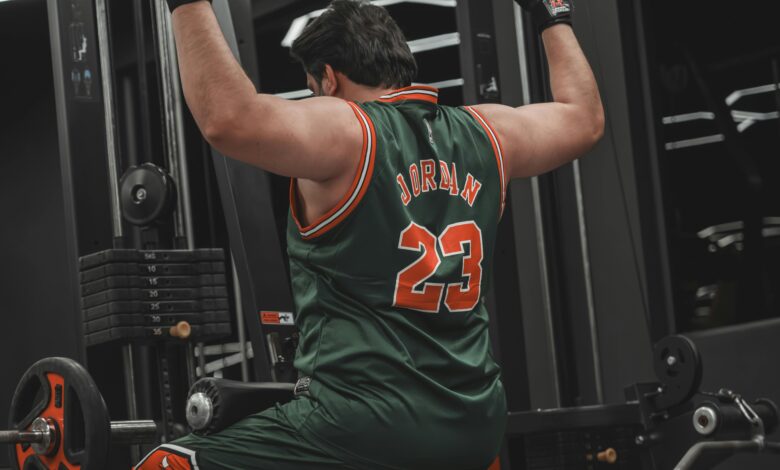The Best Kettlebells for Strength Training: A Comprehensive Guide

Kettlebells have become a staple in strength training routines due to their versatility, portability, and effectiveness. Whether you’re a beginner or an experienced athlete, choosing the right kettlebell can make a significant difference in your workouts. In this guide, we’ll explore the key factors to consider when selecting a kettlebell, highlight some of the best options on the market, and provide tips for maximizing your strength training sessions.
Why Use Kettlebells for Strength Training?
Kettlebells offer unique benefits that set them apart from traditional dumbbells and barbells:
- Full-Body Workouts : Kettlebell exercises engage multiple muscle groups simultaneously, promoting functional strength.
- Improved Mobility and Stability : The offset weight distribution challenges your balance and core stability.
- Cardiovascular Conditioning : Dynamic movements like swings and snatches elevate your heart rate, combining strength and cardio.
- Compact and Portable : Kettlebells take up minimal space and are ideal for home gyms or outdoor workouts.
- Versatility : From ballistic exercises to slow, controlled lifts, kettlebells cater to a wide range of fitness goals.
Key Factors to Consider When Choosing a Kettlebell
Before purchasing a kettlebell, consider the following factors to ensure it meets your needs:
1. Material
- Cast Iron : Durable and affordable, cast iron kettlebells are the most common choice. They have a solid construction but can be prone to rust if not maintained.
- Coated (Rubber, Vinyl, or Neoprene) : These kettlebells are coated to reduce noise and protect floors, making them ideal for home use.
- Steel Competition Kettlebells : Designed for professional athletes, these have a consistent size and shape regardless of weight, ensuring uniformity during competitions.
2. Weight
- Beginners: Start with lighter weights (8–12 kg for women, 16–20 kg for men) to master form and technique.
- Intermediate/Advanced: Progress to heavier kettlebells (16–24 kg for women, 24–32 kg for men) as you build strength.
- Note: Women often prefer increments of 2–4 kg, while men typically increase by 4–8 kg.
3. Handle Design
- A comfortable handle is crucial for grip and safety. Look for:
- Smooth, rounded edges to prevent calluses.
- Adequate thickness to accommodate both one-handed and two-handed grips.
- Textured or powder-coated handles for better grip during sweaty workouts.
4. Durability
- Ensure the kettlebell is made from high-quality materials to withstand repeated use. Avoid cheap models that may chip or crack over time.
5. Price
- Prices vary based on brand, material, and weight. While budget-friendly options are available, investing in a durable kettlebell can save money in the long run.
The Best Kettlebells for Strength Training
Here’s a curated list of top-rated kettlebells across different categories:
1. Best Overall: Rogue Fitness E-Coat Kettlebell
- Features :
- Cast iron construction with a durable enamel coating.
- Color-coded handles for easy weight identification.
- Wide, flat base for stability during floor exercises.
- Pros :
- Excellent balance and craftsmanship.
- Suitable for both beginners and advanced users.
- Cons :
- Slightly higher price point.
2. Best Budget Option: CAP Barbell Cast Iron Kettlebell
- Features :
- Classic cast iron design with a matte finish.
- Available in a wide range of weights.
- Pros :
- Affordable and widely accessible.
- Solid build quality for the price.
- Cons :
- No protective coating, which may lead to rust if not cared for.
3. Best for Home Gyms: Bowflex SelectTech Adjustable Kettlebell
- Features :
- Adjustable weight system (8–40 lbs) with a single dial mechanism.
- Space-saving design eliminates the need for multiple kettlebells.
- Pros :
- Perfect for small spaces.
- Convenient for progressive overload.
- Cons :
- Higher upfront cost compared to fixed-weight kettlebells.
4. Best Coated Kettlebell: REP Fitness Rubber Coated Kettlebell
- Features :
- Rubber coating protects floors and reduces noise.
- Flat bottom for stability during rest periods.
- Pros :
- Ideal for home use or shared spaces.
- Comfortable handle with a smooth finish.
- Cons :
- Limited color options for weight identification.
5. Best for Competitions: Dragon Door RKC Kettlebell
- Features :
- Steel construction with a standardized size and shape.
- Designed specifically for competitive kettlebell sports.
- Pros :
- Consistent feel across all weights.
- Preferred by professional trainers and athletes.
- Cons :
- Expensive and unnecessary for casual users.
How to Incorporate Kettlebells into Your Strength Training Routine
To get the most out of your kettlebell workouts, incorporate these effective exercises into your routine:
1. Kettlebell Swing
- Targets: Glutes, hamstrings, lower back, shoulders.
- Technique: Hinge at the hips, drive through your glutes, and swing the kettlebell to shoulder height.
2. Goblet Squat
- Targets: Quads, glutes, core.
- Technique: Hold the kettlebell close to your chest and perform a deep squat.
3. Turkish Get-Up
- Targets: Full body, stability, mobility.
- Technique: Transition from lying down to standing while keeping the kettlebell overhead.
4. Kettlebell Clean and Press
- Targets: Shoulders, arms, core.
- Technique: Clean the kettlebell to your shoulder and press it overhead.
5. Renegade Row
- Targets: Back, biceps, core.
- Technique: Perform rows in a plank position while holding kettlebells.
Tips for Maximizing Your Kettlebell Workouts
- Focus on Form First : Prioritize proper technique to avoid injury and maximize effectiveness.
- Start Light : Begin with lighter weights to master movements before progressing to heavier kettlebells.
- Combine Cardio and Strength : Alternate between high-intensity kettlebell circuits and slower, controlled lifts for balanced training.
- Warm Up Properly : Prepare your muscles and joints with dynamic stretches and mobility drills.
- Track Your Progress : Keep a log of your workouts to monitor improvements in strength and endurance.
Common Mistakes to Avoid
- Using Too Much Weight : Lifting excessively heavy kettlebells compromises form and increases injury risk.
- Neglecting Grip Strength : Weak grip can limit performance; incorporate grip-strengthening exercises if needed.
- Skipping Rest Days : Overtraining leads to fatigue and burnout. Allow time for recovery.
- Improper Breathing : Coordinate your breath with movements to maintain stability and power.




